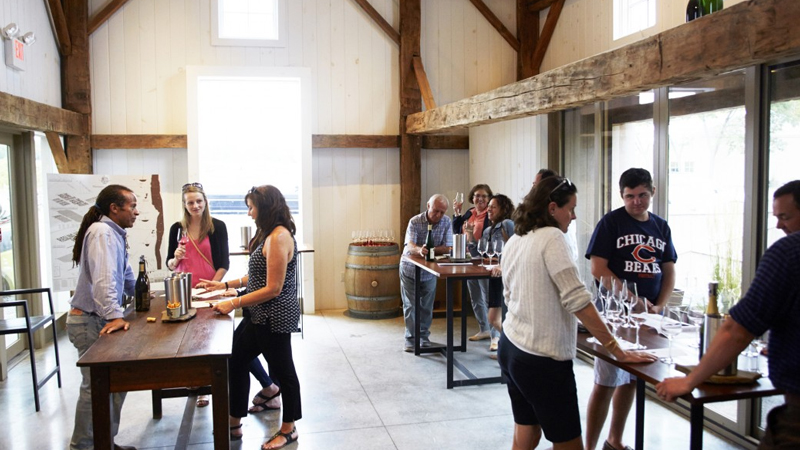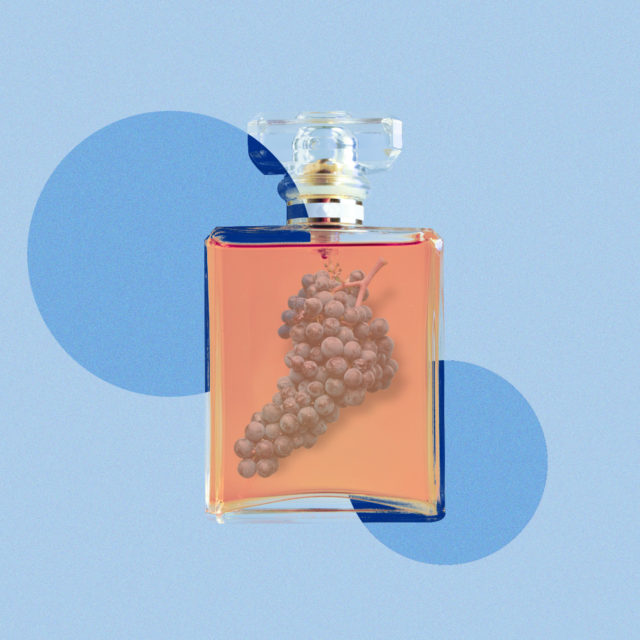No event in viticultural history has captured the moment that an unheralded wine region shot to fame quite like the 1976 Judgement of Paris. The results of the blind tasting, in which bottles of Napa Valley Cabernet Sauvignon and Chardonnay bested wines from the leading French producers of the time, stunned all. In that moment, America’s wine industry finally emerged from the dark shadow of the failed Prohibition experiment.
In the years after the now-famous tasting, Napa producers doubled down on Cabernet Sauvignon and Chardonnay, embracing the varieties as their own. Unlike in Europe, the names of these varieties took center stage on wine labels, which only strengthened the ties between grape and region. Before long, Napa’s reputation as a world class destination for Cabernet Sauvignon and Chardonnay was sealed.
While the historic nature of the Paris blind tasting has yet to be repeated, multiple New World regions have borrowed from Napa’s playbook. Whereas the DOCs of France and Italy historically sought to turn communes into brands, regions like the Finger Lakes and Willamette Valley, and countries like Argentina and New Zealand highlighted specific grape varieties as their signature wines. In doing so, Oregon Pinot Noir and Argentine Malbec became known far beyond state, national, and even continental boundaries.
But if the formula for success is indeed so simple, a question arises: Why haven’t other New World regions followed suit?
California, Oregon, and New York account for three of the top five American states in terms of their total number of wineries. Washington State and Texas make up the other two — neither of which has decided to go all in on a signature variety. (Nor, it could be argued, have their wine regions gained the same recognition as Napa or Willamette Valley.) And they’re not alone; look no further than states like Virginia, and California regions such as Paso Robles.
Are these and other “emerging” wine regions missing a trick, or are there valid reasons to opt against close association with individual varieties? And is the key to success really just honing in on a certain grape, or are there other more complex factors at play?
Defining “Success”
The importance of signature varieties is not lost on Aileen Sevier, director of marketing for Virginia’s Early Mountain Vineyards. Sevier’s prior experience in the industry has spanned positions at an import company, and work as a wine buyer when New Zealand Sauvignon Blanc and Argentine Malbec took off. She has no doubt that the “explosive growth and commercial success” of each example was a direct result of those regions having signature varieties. By conveying a crisp, clear message to consumers, she says, Argentina and New Zealand managed to stand out in a saturated sea of options. Even so, she adds, “There are negatives to mass-market success.”
While signature varieties offer an avenue to quick-fire recognition, they can harm a region’s prospects in the long run — especially if value and affordability are woven into their identities. Before long, journalists inevitably tire of writing about such wines, engaged drinkers will move on to something new, and sommeliers treat them as a cash cow.
As for the regions, their attempts to shift cases of their “other varieties” along with their now-ubiquitously popular signature end up falling on deaf ears among importers, who tell them there simply isn’t a market for New Zealand Pinot Noir.
This very scenario is one that Sandy Block, MW, Boston-based vice president of beverage operations for Legal Sea Foods, experienced first hand. “Coming back from New Zealand once, I got so excited I put seven New Zealand Pinot Noirs on my list,” he recalls. “That quickly got whittled down with the help of the accountant to zero.”
Nevertheless, Block agrees on the importance of signature varieties as a means of becoming known. He points to the varying fortunes of Oregon and Washington in the Pacific Northwest as an example: While Oregon is much smaller in terms of production, the state has marketed its wines successfully via its association with Pinot Noir, he explains. Washington wine, on the other hand, is almost invisible on the East Coast despite its quality “because nobody knows what to make of it,” he says.

The Importance of Tourism
While Sevier and Block highlight the pitfalls of becoming pigeonholed, others argue there are ways for a region to avoid second- album syndrome. The key is focusing on local markets.
Oskar Bynke, co-owner of Hermann J. Wiemer Vineyard in New York’s Finger Lakes region, attributes the region’s success to Riesling. When it comes to selling alternative varieties, Bynke also shares experiences of distributor pushback.
“Ten years ago,” he says, “the only ‘in’ you had if you wanted to sell as a glass pour in New York City was dry Riesling at a very competitive price.”
That’s no longer the case, though, thanks to the Finger Lakes’ burgeoning tourism industry. As visitations to the region’s tasting rooms increased, wineries have been able to taste guests on their full range of offerings from Pét-Nats to Cabernet Franc. Bynke says the “critical mass of tourism” makes producing and selling those wines a viable economic option.
Early Mountain’s Sevier also cites tourism as an important factor in the greater conversation of how a wine region gains recognition.
As a director of marketing, her role is to promote a Virginia winery that produces 11 grape varieties, from a region that has not historically taken the signature variety route. Based on her experience, Sevier contests this is the right decision for Virginia. “With the variability of our climate, the same way Bordeaux has significant vintage variation,” she says, “diversification is the right way for us to be sustainable long term.”
While diversification makes it admittedly tough to communicate with consumers, tourism and tasting room visits allow wineries to break down those barriers, she says, adding, “It’s the most powerful connection you can make.”
The Might of Marketing
Exploring the pros and cons of signature varieties risks ignoring a critical piece of this puzzle: Finding and embracing a specific grape variety does not guarantee success.
On the opposite end of the spectrum, there’s historical precedent for signature varieties never taking off. “I had high hopes 15, 20 years ago of Carménère being that grape for Chile,” Block says. “People don’t love Carménère.”
Similarly, he describes the Pinotage coming out of South Africa over the past decade as being “stellar” and something the country could hang its hat on. In 2019, the native South African red variety accounted for just 7 percent of the country’s grape plantings.
Does this cast doubt on the signature variety theory or is this failure a combination of marketing and approachability?
Almost certainly the latter. Carménère and Pinotage are not well-known varieties in the same way that Cabernet Sauvignon or Pinot Noir are. And while the same could be said of Malbec prior to its runaway success in Argentina, the latter’s flavor profile is considered much more mass-market friendly, lacking the vegetal pyrazine notes of Carménère and Pinotage’s meaty, smoky character.
These are not just hypothetical ideas for vintners in “younger” wine regions to consider; they’re conversations and discussions that play out in real life.
Matt Crafton is the winemaker at Napa Valley’s Chateau Montelena — the very winery that provided the winning Chardonnay for the Judgement of Paris tasting. However, in the early 2000s, he started out as a cellar rat in Virginia. At the time, Crafton recalls, the region was trying to ride the coattails of Napa’s success by putting out Chardonnay and Cabernet Sauvignon. Though the grape names would have been familiar to Napa drinkers, the taste and quality were certainly not.
Crafton remembers a meeting during that period where the issue was debated by vintners, winemakers, and “high-end marketing people” from Virginia’s wine industry. “On the production side, everyone was talking about how Viognier, and Rhône and Spanish varieties would do really well in Virginia,” he says. “But the marketing people kept pushing back, saying, ‘Viognier is not going to sell your wine.’”
Quality Time
We can explore different interpretations of success and the nuances of wine marketing all we want, but ultimately it all boils down to quality.
Winemaking is as much about experience as it is know-how. The year the Napa wines won the Judgement of Paris, Chenin Blanc plantings in the region outnumbered Chardonnay by almost two to one. Carignan reigned supreme across the state, and certain areas of Napa were thought to be too cold for high quality red grape production.
The success of Chateau Montelena’s Chardonnay and Stag’s Leap Vineyards’ Cabernet Sauvignon — the winning red — didn’t just serve validation to these producers; it helped teach them, and their neighbors, a thing or two about their region.
“I find it really fun to look through our old labels,” says Marcus Notaro, Stag’s Leap’s current winemaker. “We were making things like Alicante Bouschet, Gewürztraminer, and Riesling — it was a time of great experimentation.”
And such experimentation is only natural for a younger wine region. “It takes a long time to know what variety is going to do best in your area,” Notaro says.
Perhaps this is not a conversation of if a wine region should embrace a signature variety but instead when it will happen upon it. Like all things in life, maybe it’s only a matter of time.
This story is a part of VP Pro, our free platform and newsletter for drinks industry professionals, covering wine, beer, liquor, and beyond. Sign up for VP Pro now!
